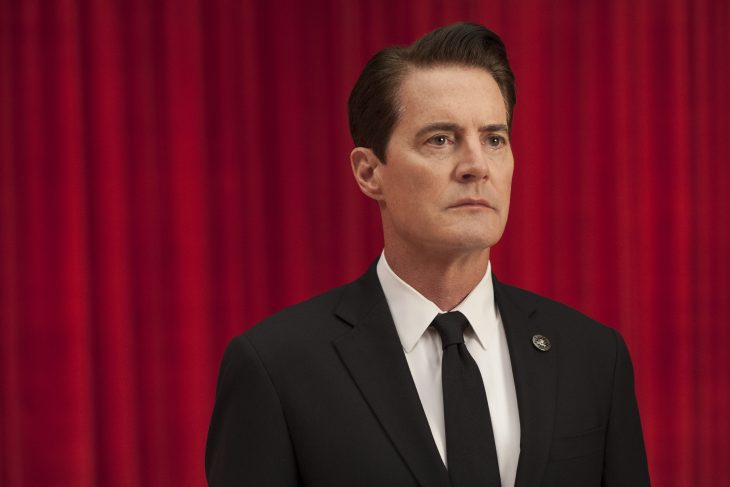So much coffee. Just like in the original, the characters in the new series of Twin Peaks get through so much coffee. Major characters huddle around it in diners. Background characters raise mugs to their lips. Entire scenes revolve around the stuff. There’s just so much coffee.
And, I’m proud to say, I played my part too. I knocked off an entire cafetière so that I’d be awake for the two-part opening to the series, which aired at 2am this morning on Sky Atlantic. And I finished another cafetière to write this post. This is not an occasion I was going to miss. Not only is the return of Twin Peaks, after an absence of 26 years, a big deal in itself; it’s also happening at just the right time. As I wrote in the magazine a couple of weeks ago, we could do with a show that takes a hard look at nostalgia in all its forms. Twin Peaks certainly was that show. Could it be that show again?
On the evidence of these first two parts, the answer is yes. They began by transporting us back those 26 years, back to the weird, spiritual interzone of the Red Room, and back to FBI agent Dale Cooper’s final exchange with the dead Laura Palmer. But before we could settle into the familiarity of it all, the screen faded to black, then the credit sequence began. The music was the same as before – Angelo Badalamenti’s woozy ‘Twin Peaks Theme’ – but the images were different and obscured by mist. Time, we might have guessed, changes things.
Soon after the opening credits, there was a shot of skyscrapers, with the caption: ‘New York City’. It wouldn’t have seemed out of place in any of the thousand CSI: Whatever shows, but in Twin Peaks it seemed both out of place and out of time. We’re used to spending almost every screen-minute in the small mountain town of Twin Peaks itself – with its ‘way of living I thought had vanished from the earth’ – but this new series has already taken us to New York, Las Vegas and Buckhorn, South Dakota.
The New York sequence also went some way to answering one of the questions that I asked in my magazine article: how would the new Twin Peaks deal with the present day? The first two series were technically set in 1989, but they belonged to a refracted version of the 1950s. This third series is technically set now, and a lot of it belongs to now too. David Lynch’s camera dwells on the black plastic casing of laptops and other digital equipment. He makes a point of the 21st century.
The 21st century has also made something of David Lynch – and we’re seeing it in this new Twin Peaks, which he has directed in full. His wholesale move to digital filmmaking at the time of his last feature, Inland Empire (2006), gives this series a colder look than its predecessors. His experiments in music, as per his two albums Crazy Clown Time (2011) and The Big Dream (2013), have replaced most of Badalamenti’s compositions. He’s even listed as the show’s sound designer in the end credits. If Twin Peaks has changed, it’s because Lynch has changed.
Yet some things stay the same. The two-parter climaxed with a scene in Twin Peaks’s Bang Bang Bar, and it felt like a reunion. There was James making eyes at Shelly, both older now, but somehow untouched by time. The same goes for Log Lady and Hawk and Lucy and Andy, all of whom we’d seen earlier. Whenever these characters were on screen, new Twin Peaks was old Twin Peaks again. The familiarity came shuddering back.
As one character put it, ‘Is it future or is it past?’ The third series of Twin Peaks is a juxtaposition of new and old – and perhaps that’s the point. Can the latter survive the former? Can a mountain town isolate itself from whatever came out of that box in New York? Can the next 16 episodes maintain the brilliant standard of the first two? My coffee pot and I are in it for the long haul.






Comments